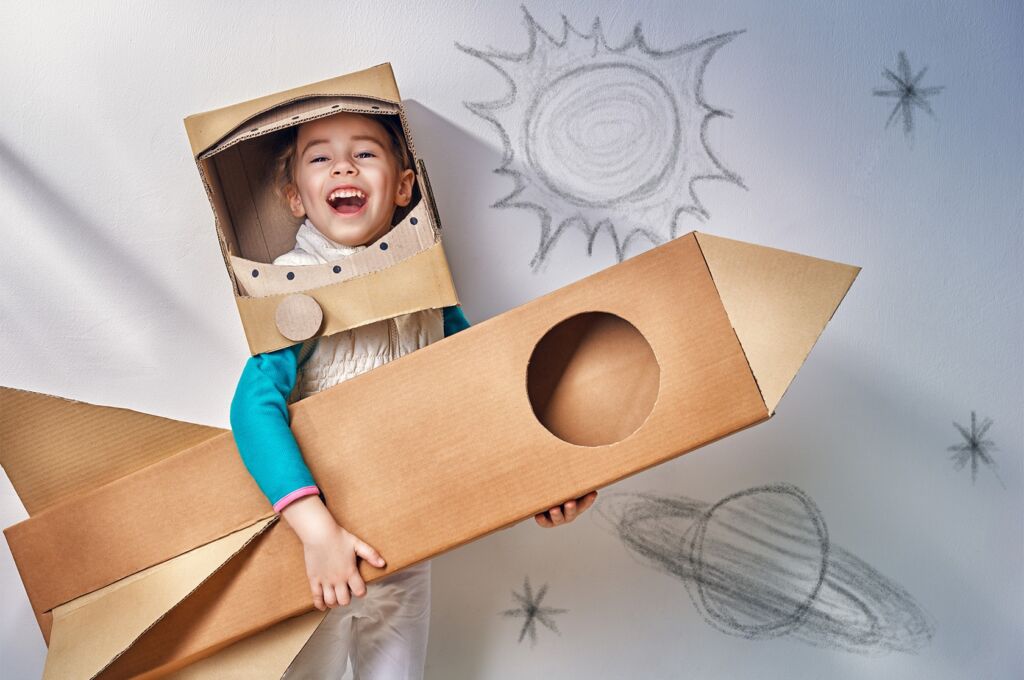There’s nothing sweeter than hearing your little one say their first precious words. Those first little words are usually followed by more words and then, eventually, by complete sentences. Before you know it, you’re listening to an entire story about who took whose ball at playtime and who sat next to who at lunch. But for many parents, those first sweet words aren’t spoken on time or even at all, causing parents to worry that their child may be experiencing a problem with their speech development. In fact, according to the National Institutes of Health, nearly 1 in 12 (7.7 percent) of U.S. children ages 3 to 17 has had a disorder related to voice, speech, language, or swallowing in the past 12 months alone.[1] So how do you know if your child is just developing a little slower and will catch up in time or if there’s something more going on? Let’s take a closer look at speech disorders and where you can go for help.
When to Worry
Parents should begin to look for signs of a speech problem around 12 months of age, says Crystal L. Kinder, MA CCC-SLP, a Speech-Language Pathologist in Virginia. During a baby’s first year, their speech and language development can vary as they explore and grow. Some little ones may be focused on learning new physical skills and less interested in language skills, while others may develop language at a faster rate than their physical skills. Normal speech development during the first year includes crying at birth, learning to change their cry for different needs and babbling and cooing as they begin to grow. This baby talk is followed by the imitation of speech and expression and then finally actual spoken words. “Signs there may be a problem include if a child does not babble or use jargon, makes only a few sounds, or says fewer than 50 words by age 2 or isn’t able to put two words together around age 2,” says Kinder. Other clues that may point to an issue are if your child “says p,b,m,h incorrectly at an early age, produces speech that is unintelligible, leaves off the beginning, medial, or ending sound of words,” says Kinder. Noticing these signs at an early age can mean intervention at the earliest time possible which can lead to better results for your child’s development. Keep in mind, however, that “not all speech sounds are expected to correct at an early age,” says Kinder. “Certain sounds develop later than others.”

The Difference Between Speech and Language Disorders
Not all speech issues are created equal. Speech disorders affect the sounds produced orally by the mechanics of the mouth, including the movement of the lips, tongue and vocal cords, as well as, other oral mechanisms.[2] Language disorders refer to the ability to process and communicate thoughts and memories in language form, as well as, listen and understand what others are saying.[2] Thus, children with speech disorders may have a hard time making sounds and children with language disorders may have trouble understanding what is being said to them. These disorders can occur separately or together. Another reason for speech difficulty is a hearing loss which can delay speech development.[3] Certain speech disorders include stuttering, omissions, and distortions of words, oral apraxia which is a speech disorder where a child may have a hard time moving the tongue and lips and coordinating making sounds at the same time.[4] Dysarthria is also a speech disorder where the muscles have poor movement due to weakness or paralysis. A child may also have a hard time with their voice, known as phonation disorders or resonance disorders, which involve trouble with how the voice changes as it travels over the vocal chords and out of the mouth.[4]
What You Can Do to Help
First and foremost, speak to your baby early and often to encourage proper speech and language development. “Talking to your child even at an early age is important. Exposure to language is also very important,” says Kinder. “Reading to your child and talking to them even as an infant will greatly benefit your child’s speech and language development.” And if you think your child may be having a problem with speech development, there are steps you can take to help your child learn techniques to improve their speech and gain the confidence they need to speak proudly and loudly. “Always stay connected with teachers, daycares, and preschools,” says Kinder, who adds that good communication is the key to understanding your child’s speech patterns. “Teachers and daycare providers can let you know if your child is having trouble understanding or if your child is not communicating with others.” And if a speech problem persists, “you need to speak with your pediatrician or a licensed speech-language pathologist,” says Kinder.
Being your child’s cheerleader and support system is vital to their speech development. Give your little one encouragement by letting them know how well they are doing and how much you love them. Make sure to be patient as they communicate with you and always search out activities that can help foster a rich language environment. Reading and communicating with your child on a daily basis is one of the best things you can do to help your child’s speech development progress further, says Kinder. Staying the course and providing a loving, supportive environment will make a world of difference to your child. Before long, you’ll be hearing the sweetest sounds coming from your little one and that will be worth it all.
Sources:
Cincinnati Children’s Hospital, “Speech Disorders.”
Expert: Crystal L. Kinder, MA CCC-SLP
National Institutes of Health.
Rosenbaum, S. and Simon, P. “Speech and Language Disorders in Children.”
U.S. National Library of Medicine. MedlinePlus. “Speech and Language Problems in Children.”
[1] Quick Statistics About Voice, Speech, Language link
[2] Speech and Language Disorders in Children: Implications for the Social Security Administration’s Supplemental Security Income Program. link
[3] Speech and Language Problems in Children link
[4] Speech Disorders link
About the Author:
Tracy E. Brown is a journalist and educator with over 14 years of experience working in the field of Child Development. She is currently the Assistant Editor of Black Dress/Red Wagon Magazine in Atlanta, Ga. and previous Associate Editor at Pregnancy & Newborn Magazine. She previously taught preschool at the Goddard School in Farragut, Tennessee and taught Kindergarten for Dekalb County Schools in Atlanta. Other writing credits include the Green Building Research Institute, London’s facetheory.com, WBIR Channel 10 News, PBS, Duke University and American Airlines. She is also a mom to three adorable little ones.



